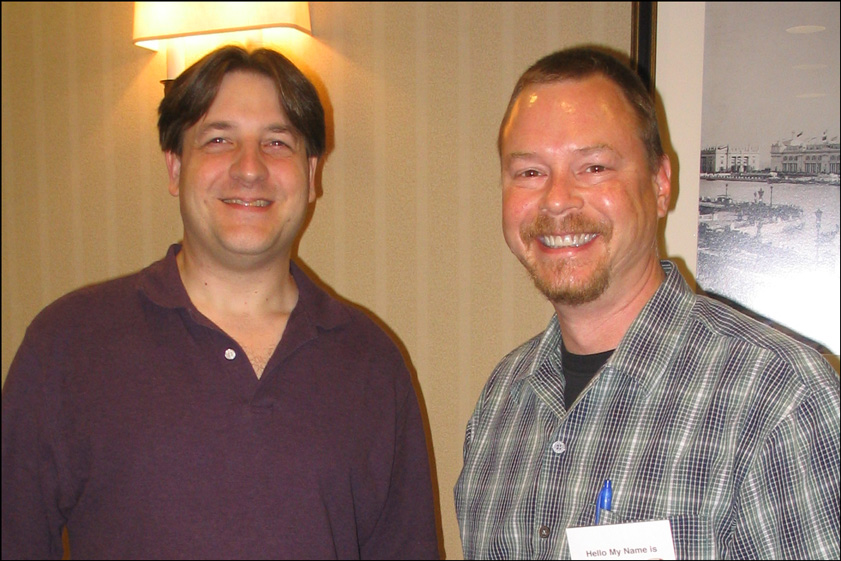On Saturday, Matthew Bielawa presented a seminar on Researching Polish Ancestry in Ukraine.
Matthew Bielawa and Stephen Danko
SOURCE: Matthew Bielawa and Stephen Danko photograph . Digital photograph taken 29 Sep 2007. Copyright © 2007 by Stephen J. Danko.
Matthew described the rationale and strategies for researching Polish roots in Ukraine. Many genealogists researching Polish ancestry may find that their families resided at some time within the current borders of Ukraine and, thus, will want to understand the history of Poland and Ukraine in order to better understand their family history and to find records relevant to their families.
Despite the fact that Poland and Ukraine are different countries today, the historic territory occupied by Poland and the Polish Lithuanian Commonwealth once included much of the area currently within Ukraine.
In the 1340s, Casimir the Great inherited Red Rus (Ukraine). In 1386, with the Union of Krewo, the Polish Jadwiga married the Lithuanian Jagiello, and the Polish-Lithuanian Commonwealth was established in 1569 with the Union of Lublin.
In 1648, Bohdan Khmelnytsky led a great revolt against the Polish rule and in 1654 Khmelnytsky formed the Treaty of Pereyaslav with Russia. This treaty, intended to protect the independence of Ukraine, led to the domination of Ukraine by Russia and, later, by the Soviet Union.
In 1918, with the independence of Poland, much of western Ukraine again fell under Polish control. After the invasion of Poland by Russia in World War II, the borders of the region were again redrawn, establishing Ukraine as part of the Soviet Union. In 1991, with the fall of the Soviet Union, Ukraine finally gained its long-sought goal of independence.
While Poland and Ukraine share a common history, many basic difference between the two cultures are apparent. While both languages are Slavic, Polish is a west Slavic language using the Latin alphabet, and Ukrainian is an east Slavic language using the Cyrillic alphabet. For the most part, most Poles are Roman Catholic, while most Ukrainians are Greek Catholics.
After the Council of Trent in 1563, Catholic priests were required to keep the records of baptisms and marriages. In 1613, Catholic preists were also required to keep records of deaths. Both Roman Catholic and Greek Catholic priests could maintain these records, and so records of baptisms, marriages, and deaths may be found in the records of either Roman Catholic or Greek Catholic parishes.
The records themselves are now located in a number of different archives, including those in both Poland and Ukraine:
-
Archive of Old Documents (AGAD) in Warsaw
-
Zabużański Collection in Warsaw
-
Provincial State Archives throughout Poland
-
Archdiocesan Archives in Lubaczów, Poland
-
Archdiocesan Archives in Przemyśl, Poland
-
Central State Historical Archive of Ukraine, Kyiv
-
Central State Historical Archive of Ukraine, Lviv
-
Provincial State Archives throughout Ukraine
Copyright © 2007 by Stephen J. Danko




